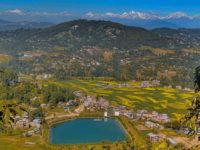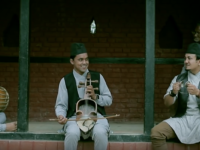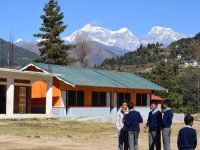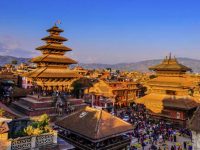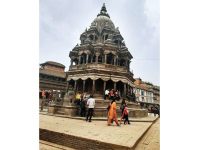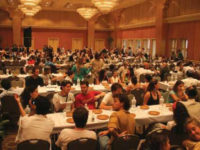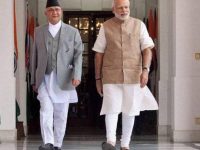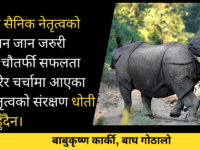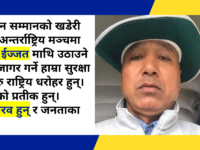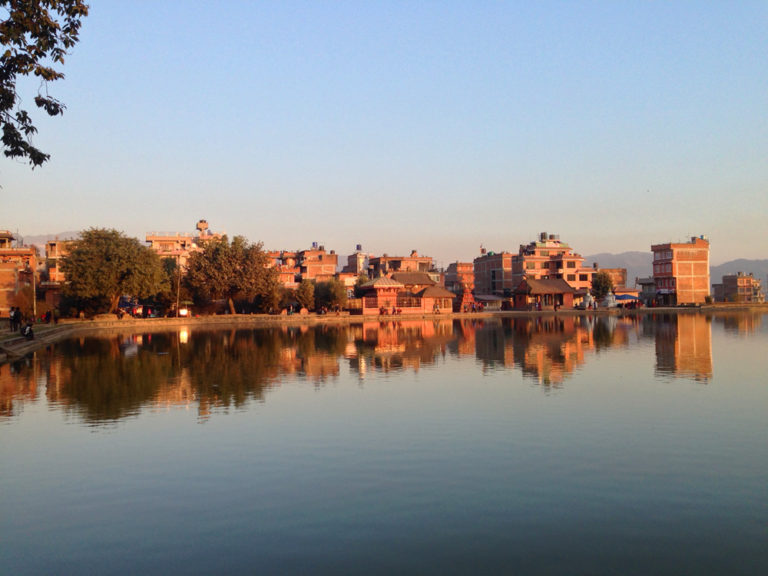Written by Padma Sundar Joshi (Space Nepal),
Today ‘Water Urbanism’ is increasingly being discussed among the policy makers and urban planners in most of the growing economies. We are living in a time when the water demand is increasing, resources are scarce, pollution and effects of climate change has escalated the challenges of water management. It is no longer limited to hardcore engineering solutions. Experts from around the world are exploring traditional practices to find sustainable solutions and to adapt them in the present context. But unfortunately, we have seen that in Nepal, the traditional systems are being slashed, smashed and destroyed with the direct and indirect involvement of the government.The heinous attempt to destroy Rani Pokhari, the most spectacular water heritage of Kathmandu is one of the most recent examples. We cannot reverse these damages unless we understand more about our traditional water management practices, particularly the Pokhari systems.
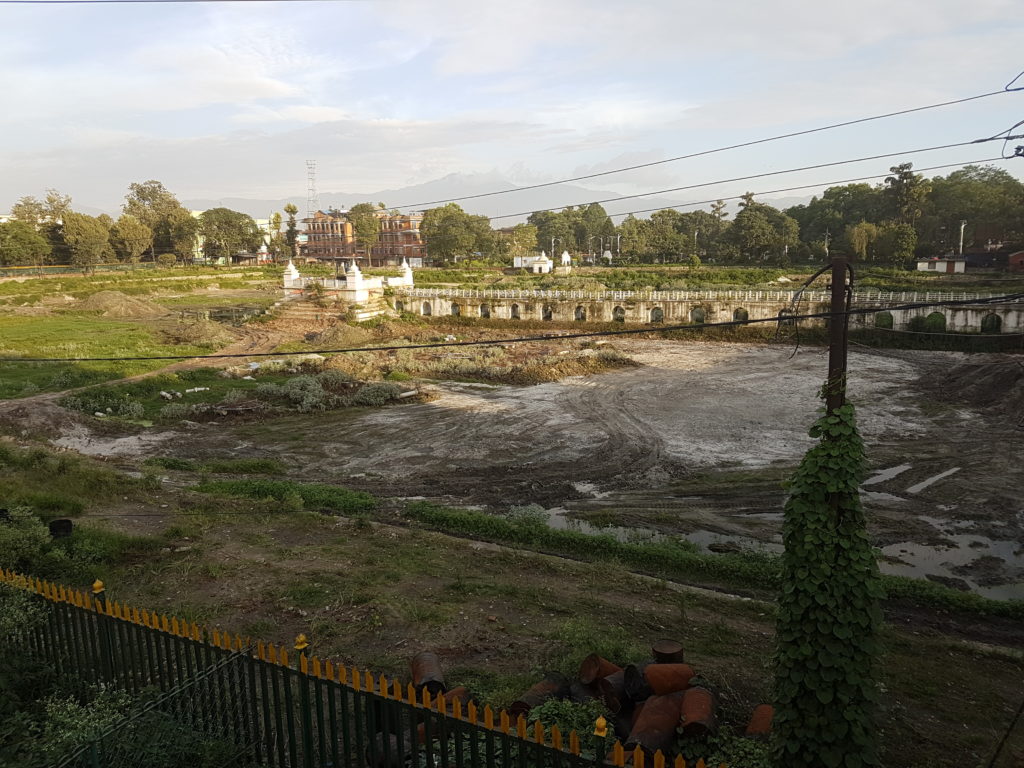
Promo: Cyber Monday Deals Still Going On
It is important to comprehend the settlement planning principles adopted by our ancestors to understand the traditional water urbanism of Kathmandu Valley. Perhaps without a single exception, all Newar settlements are located on the tar land where three of its sides are sloping down to the flood plains of a river. Tar lands have the primary source of water as rain, which explains the limitation of water availability in these areas. These settlements in the water-scarce area were made possible mainly because of their Hiti system in which the ponds were the vital component. Stone spouts in the depressions (called Hiti) and the dug wells are the primary sources of water in Newar settlements. These are served by shallow aquifers formed due to the particular hydro-geological conditions.
To allow continuous flow of water through these conduits, ponds are dug up for collecting storm water. They are further charged by Rajkulos that bring water from upstream rivers irrigating its command area. Furthermore, the concentrated monsoon downpour is buffered in these ponds so that they do not flood the downstream settlements nor demand larger water works to drain them out. Obviously, the available water and the pond space not only provides water bodies to cool the surroundings and balance the ecosystem, but it also provides auxiliary functions like washing, cleaning and duck farming.
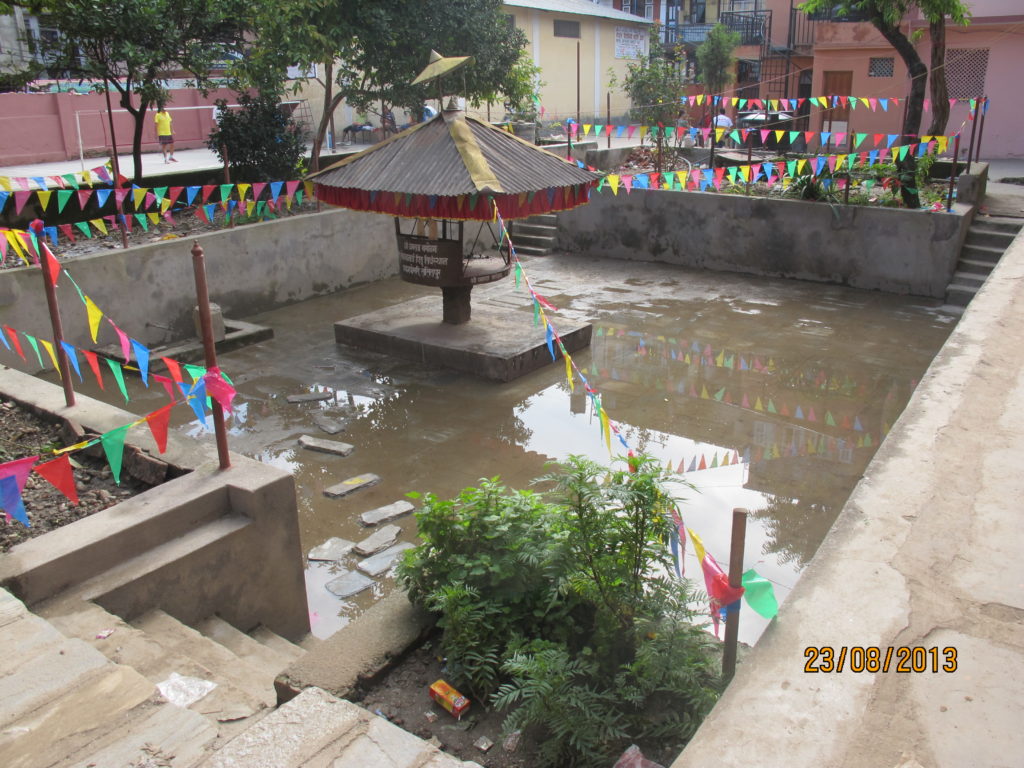
Over the period of time, many rituals and festivals were linked with these ponds. They have become an integral part of the landscape of the Newar settlements. While they beautify the neighborhood, they also provide an open space in the clustered setting. As per their location and their use, they may be categorized into ponds upstream of the settlements, ponds within the settlements and the ponds downstream of the settlements.
Upstream ponds, especially those located at the higher elevation from the settlements are meant for recharging the aquifer, serving as a buffer during heavy downpour and as a reservoir for feeding irrigation canals. These ponds are relatively large in size. Lainchaur Pokhari, Rani Pokhari and Ikha Pukhu in Kathmandu; Siddhi Pukhu, Kamalbinayak Pukhu, and Nā Pukhu in Bhaktapur; and Nhu Pukhu, Paleswan Pukhu and Jyawalkhyo Pukhu in Patan are few examples of this type. Most of them were linked with deidhā (or rajkulo) and some also have artisan wells to feed the ponds (like in Siddhi Pukhu). These canals help to charge the aquifers through the ponds during dry season as well.
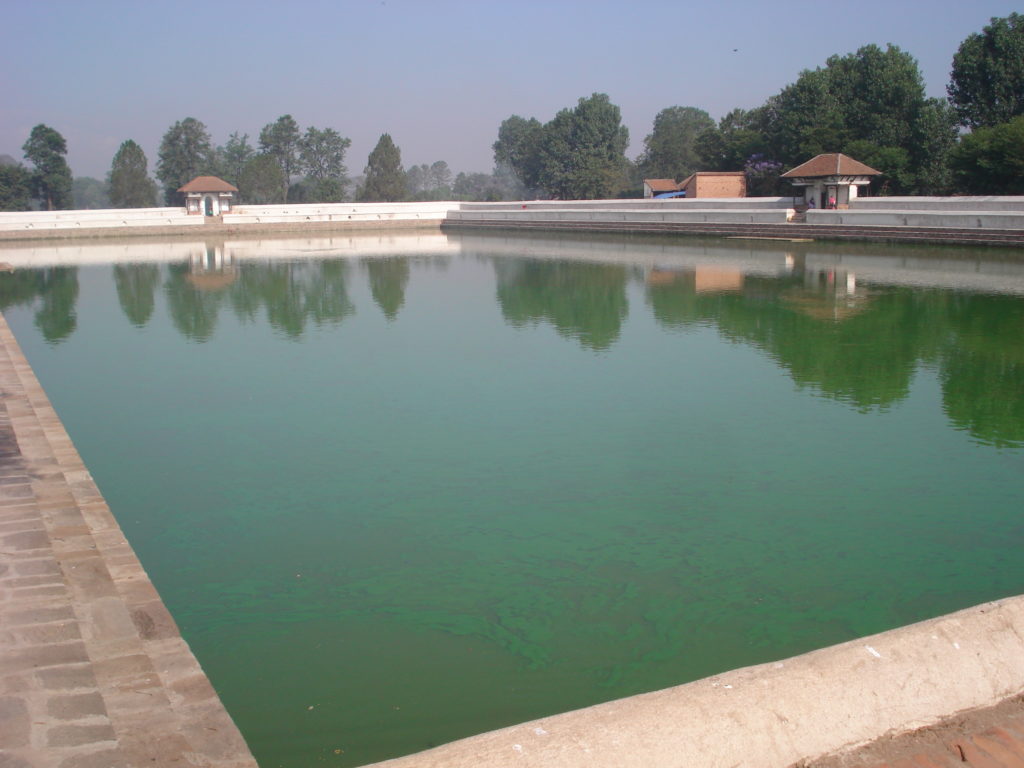
The ponds inside the settlements are relatively smaller in size. Washing and cleaning are the visible functions they serve. They support the settlements by providing buffer to the downpours during rainy season. More importantly, they help to recharge the ground water particularly to local aquifers. Duck farming, animal bathing, grey water treatment and fire-fighting are some of the auxiliary functions they serve to the neighborhoods. Kathmandu already lost these ponds and Nagdaha Pukhu and Tekha Pukhu are the examples for such ponds in Bhaktapur. In Lalitpur, Pimbahal Pukhu is one of the conserved ponds at the present time. Chyasa Pukhu, Guita Pukhu and Tyagah Pukhu in Patan are some of the examples of downstream ponds. Many of these ponds have been encroached at present. These ponds help to recess the storm water during the downpour, protecting the settlements from slope scouring and landslides. These ponds also receive grey water from stone spouts, surface drains and dirty water from cleaning, animal bathing, animal feeding, etc. During dry season, most of these ponds completely dry out.
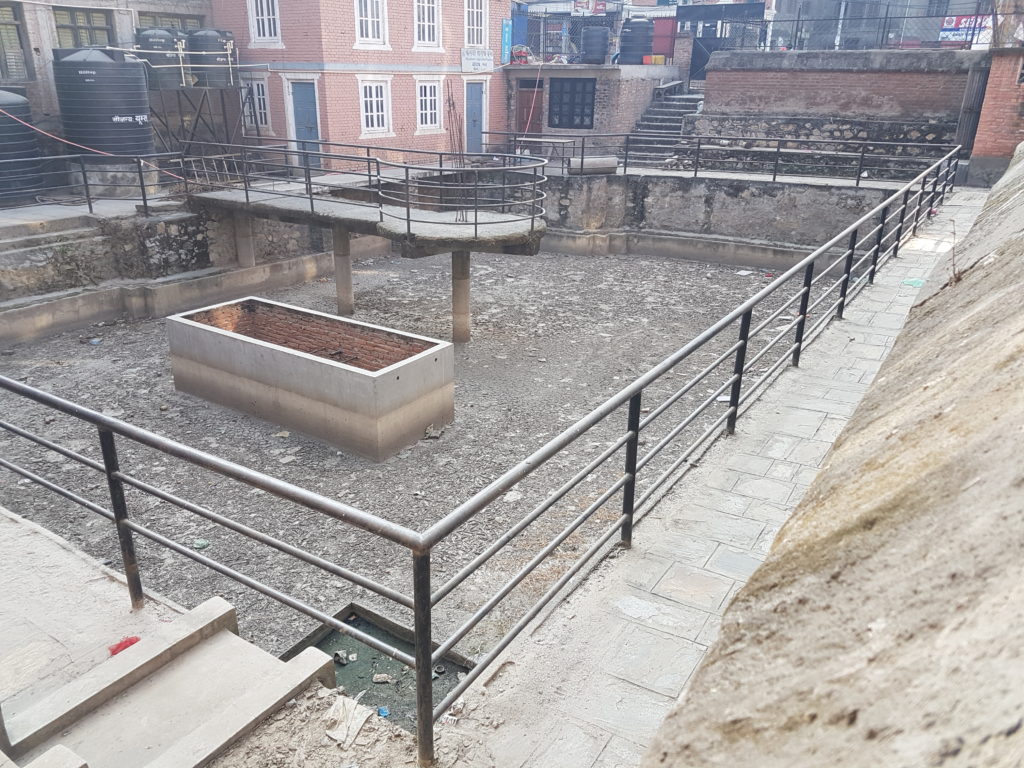
The construction of a pond is a skillful engineering work requiring good knowledge of local hydro-geology. Traditionally, clay liners are provided one foot or more of thick black cotton soil. As found in Rani Pokhari, walls are constructed with dry brick masonry so that the ground water flow is not completely restricted. This also releases the water pressure so that we do not need to build strong walls around the pond. These clay layers not only provide liners but also serve as a habitat for the flora and fauna that recycle the resources of the pond, keeping it healthy. In artisan wells such as the Siddhi Pokhari or the Rani Pokhari, the water balance is maintained throughout the year even after the loss of rajkulos.
In my opinion, introduction of piped water system must have been the beginning of neglect towards the traditional water systems. With rapid urban growth, the new developments began to start grabbing the ponds mostly due to ignorance, if not greed. Eventually, people started throwing waste and garbage in these unattended ponds. After each house began to have individual toilets, the surface drains of the pond that used to collect storm water were filled with sewage being discharged in them. After the situation began to aggravate and ponds were seen as a nuisance, the community eventually agreed to convert these ponds into schools, municipal offices or similar use. Then, the government along with the locals showed their ‘creativity’ by encroaching the ponds for public buildings, if not private ones. For example, out of the 39 traditional ponds in Patan, 14 are completely lost to public buildings, 9 are encroached reducing their original size drastically, and 16 are relatively in good condition so far in terms of shape and size. Even one of the municipal buildings is built over Paleswan Pukhu of Patan. Among the surviving ponds, some were renovated by using concrete for the walls and the bed, because of which the water could not infiltrate in the ground. It was not possible to recharge the pond naturally, which ultimately converted the pond into a dry concrete pit. Khapinchhen Pukhu, Kuti Sauga Pukhu, Prayag Pokhari, Bhailagaa and many more are the bitter examples of such ignorant interventions.
In the case of Rani Pokhari, once again the issue is being raised about the revitalization of our traditional ponds. It has not only raised the issue about protecting the ponds but has also brought light towards the rebuilding methods using traditional knowledge and skills. Now, it is up to us if we are able to preserve our traditional knowledge and continue the spirit of the water urbanism of the Newar civilization or not.
Spaces Nepal allowed Nepalisite.com to republish this news article. Nepalisite will be publishing more articles with Spaces Nepal.
SPACES is the solo architecture magazine established in the year 2004, with an aim of promoting Art, Architecture, and Interior of Ancient and Contemporary Nepal. It is a magazine published in keen perseverance to uphold Nepal’s Art , Architecture, Heritage and Interior Designs as well as to provide useful information to the readers regarding current trends and technologies.





